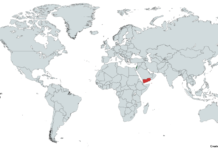The Russian-Ukrainian war took a new turn with Moscow firing hypersonic missiles that destroyed a major underground arms depot 2 weeks ago. Nine people died in the attack on Delyatin in southwestern Ukraine 100km from its border with Romania. Russia’s defense ministry said it was the first time that Moscow had used the Kinzhal, also known as Dagger, ballistic missile, in the conflict.
The missile, possibly launched from a MiG-31 warplane, can reach over 6000 km/h to reach a target 2,000 km away. In a video showing its attack on the arms depot, Russia said it was its biggest win in the war so far. But Ukraine said it had brought down 34 missiles and four Iranian-made Shahed drones. However, it could neither intercept the Kinzhal ballistic missiles nor destroy the older varieties – the Kh-22 anti-ship and S-300 anti-aircraft missiles.
Kyiv said Moscow used many types of weapons in the attack. Russian President Vladimir Putin has been stressing his country’s need to invest in hypersonic missiles. President Putin unveiled the Kinzhal four years ago. He said the missile was one in a series of invincible weapons that can evade enemy defenses. The others are the Zirkon and the Avangard, which are not only faster but can travel farther.
The Kinzhal can carry either a nuclear warhead or a conventional one. Russia has reportedly sent MiG-31 jets to Kaliningrad, thus putting several European countries in danger of facing similar missile attacks.
It is not clear where the attack on the Deliatyn arms depot was launched. However, Dominika Kunertova of the Center for Security Studies in Zurich, said the missile attack was an isolated incident as Russia did not have a large number of hypersonic missiles. Kunertova claimed that Putin was making a signal to the West, which has been challenging Russia to take all these weapons to Ukraine. A U.S. defense official said having fired over 1,080 missiles since February 24th, Russia had used a large number of its weapons and was running short of this type of ammunition.









